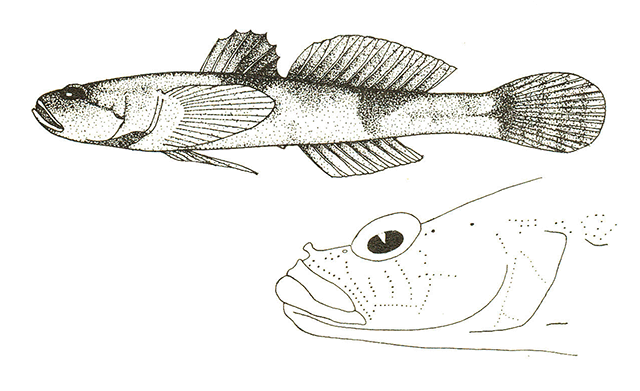| Gobiidae (Gobies), subfamily: Gobiinae |
| 4.5 cm TL (male/unsexed) |
|
demersal; freshwater; brackish; depth range 2 - 8 m |
| Eurasia: Lower reaches, deltas and limans of rivers draining to the Black Sea, Sea of Azov and Caspian Sea. |
|
This species is distinguished from other European gobies by the following characters: body slightly laterally compressed, anterior part is neither significantly wider nor flatter than caudal peduncle; head length 25-30% SL; no scales, granules, tubercles on body, but with 2-3 wide dark bars; no cephalic lateral line canals; D1 V-VII, with posterior extremity of its membranes reaching origin of D2; ; D2 with 11-13.5 branched rays; caudal peduncle about 3 times longer than deep; eye diameter about 20% HL; interorbital distance smaller than eye diameter; ventral part of second bar narrower than its middle part (Ref. 59043). |
| Occurs in lower reaches of rivers, deltas and estuaries; over muddy sand with shells (Ref. 4696). Eggs are pear-shaped (Ref. 4696). Feeds on benthic invertebrates, rotifers and algae (Ref.59043). |
|
Least Concern (LC); Date assessed: 01 January 2008 Ref. (130435)
|
| harmless |
|
Occurs in the Don delta, the lower reaches and estuary of the Volga, the northern Caspian and along the western coast of the middle Caspian Sea (Ref. 26334). EurRus |
Source and more info: www.fishbase.org. For personal, classroom, and other internal use only. Not for publication.

